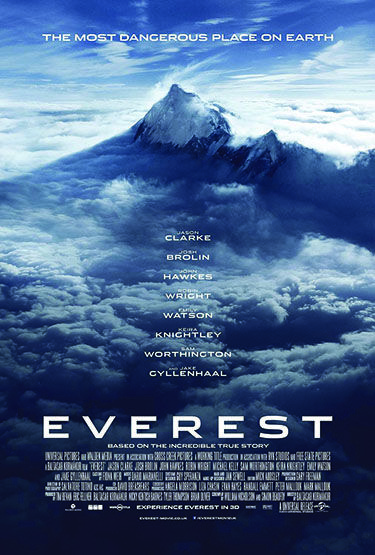Climbing fatalities are fairly common in the Himalayas and other high-altitude ranges. “Everest” (Universal), dramatizes events leading up to and during May 10, 1996, a fateful day when eight lives were lost. Among the factors that differentiated this tragedy: Three individuals who succumbed, as well as a number of survivors, paid up to $65,000 for the opportunity.
New Zealander Rob Hall (Jason Clarke), the man who invented the business of commercial expeditions to the world’s tallest pinnacles, owned a team that was climbing that day. Hall and his clients and colleagues are the film’s central characters.
Aided by this terrific ensemble and a first-rate production team, Icelandic director Baltasar Kormakur does an excellent job of conveying human saga as well as natural spectacle. The result is both sensitive and powerful, a tale of physical pain and suffering that also considers the emotional repercussions of risk-taking.
The screenplay draws from multiple, often contradictory accounts, such as the published memoirs of survivors, original interviews and several documentaries.
The absence of any genuinely objectionable material — there’s no foul language, sexual innuendo or violence in the film — makes this meditation on humanity’s struggle with the elements suitable for teens as well as grown-ups.
“Everest” doesn’t judge anyone.There are no villains, save for a vicious storm that strikes at the worst possible time. It’s human nature versus Mother Nature.
“Everest” does have a moral blind spot, however. It concerns the Sherpa guides and Nepalese people as a whole. Although none perished on that day, scores of Sherpas have died over the years while helping outsiders fulfill their mountaineering ambitions. The movie would have benefited by acknowledging the sacrifices and perspective of a nation that, in addition to being ravaged by natural calamities, has in many respects been exploited by the commercialization of climbing.
“Everest” is being released in Imax 3-D and on other large-format screens, followed by a release in standard theaters. The extra cost for 3-D viewing is probably justified by the predominance of awe-inspiring scenery. The film contains frequent scenes of peril and some gruesome images. (A-II, PG-13).

